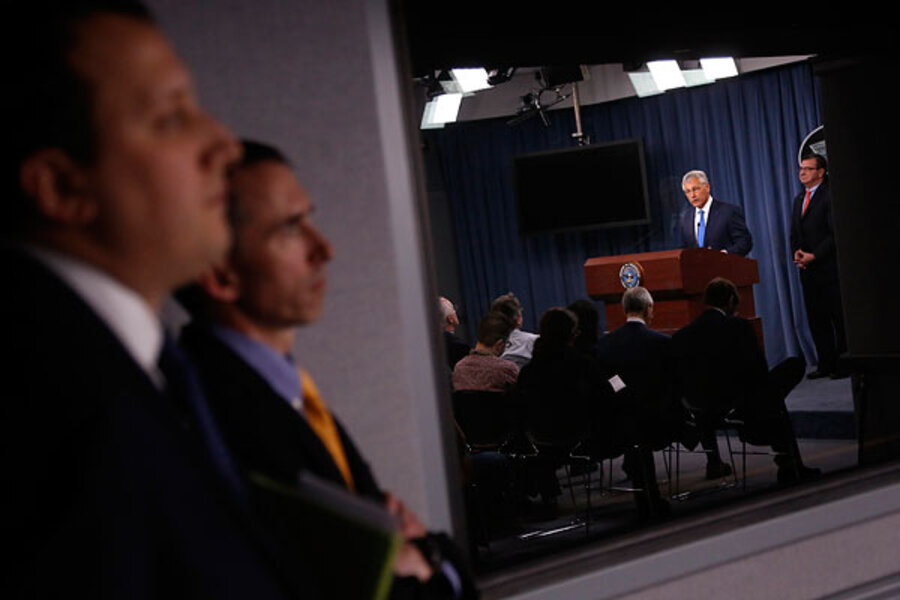'Sequester' hits home for Pentagon as 800,000 civilian workers furloughed
Loading...
| Washington
The Pentagon’s civilian workforce learned just how extensive its "sequester"-related furloughs would be on Tuesday, with the announcement by Defense Secretary Chuck Hagel that 800,000 employees would be forced to take unpaid leave.
That figure represents most of the Department of Defense’s civilian workers. Media reports suggest 10 to 15 percent of civilian workers could get exemptions. The rest are expected to be affected.
There was a glimmer of what the Pentagon did its best to emphasize as good news: that the planned number of furlough days would be reduced from 14 to 11 for most Department of Defense (DoD) employees.
Still, the furloughs are expected to leave a mark on the lives of civilian workers and Pentagon business.
“I made this decision very reluctantly, because I know that the furloughs will disrupt lives and impact DoD operations,” Secretary Hagel noted during a town hall meeting with civilian workers and troops Tuesday afternoon. “I recognize the significant hardship this places on you and your families.”
For months, US troops have raised concerns about the impact of losing skilled and specialized workers – many of the Defense Department workers who specialize in areas such as cyberwarfare and defense are civilians, for example.
Services will be able to apply for furlough exemptions for civilians working in some of the most critical fields, including all employees deployed or temporarily assigned to a combat zone. This will also likely include specialties like nuclear operations, says Laicie Heeley, an analyst with the Center for Arms Control and Non-Proliferation.
Beyond these critical positions, however, some nuclear weapons upgrades will likely face delays due to a shortage of personnel to handle them, Ms. Heeley adds.
On the heels of the failure to avert the sequester, defense officials initially warned that they would likely have to furlough civilians for as many as 22 days.
Later, that changed to a plan to fit in 14 days of furloughs – two per pay period – by the end of the fiscal year in September. But even that would have proved tricky. The Pentagon is required to notify workers 30 days in advance of furloughs.
Now, the furlough period will begin July 8 at the rate of one furlough day per week for most personnel, Hagel said, pointing out that at least the furlough rate had been cut in half.
“If our budgetary situation permits us to end furloughs early, I would strongly prefer to do so. This is a decision I will make later in the year,” Hagel added.
Some have said the Pentagon did not adequately plan ahead.
“Though the furloughs will have less of an impact than we thought it would, now that it’s down to 11 days, it’s still really sort of taking a shot at the people and programs. The Pentagon didn’t take the time to plan in advance and now it seems like people are getting the brunt of it all,” Heeley says.
Pentagon officials say the entire situation is chaotic.
“It’s a mess. It’s just a real mess,” the nation’s top military officer, Gen. Martin Dempsey, told troops during a town hall meeting in April. “I mean, if you ran your house like this, you’d get an Article 15,” military parlance for a punishment under the Uniformed Code of Military Justice. “Honest. Really. If you ran your budget like we’re running ours ... initially it would be nonjudicial punishment, then we’d probably end up giving you a court-martial.







